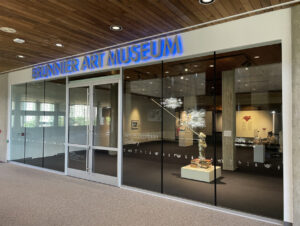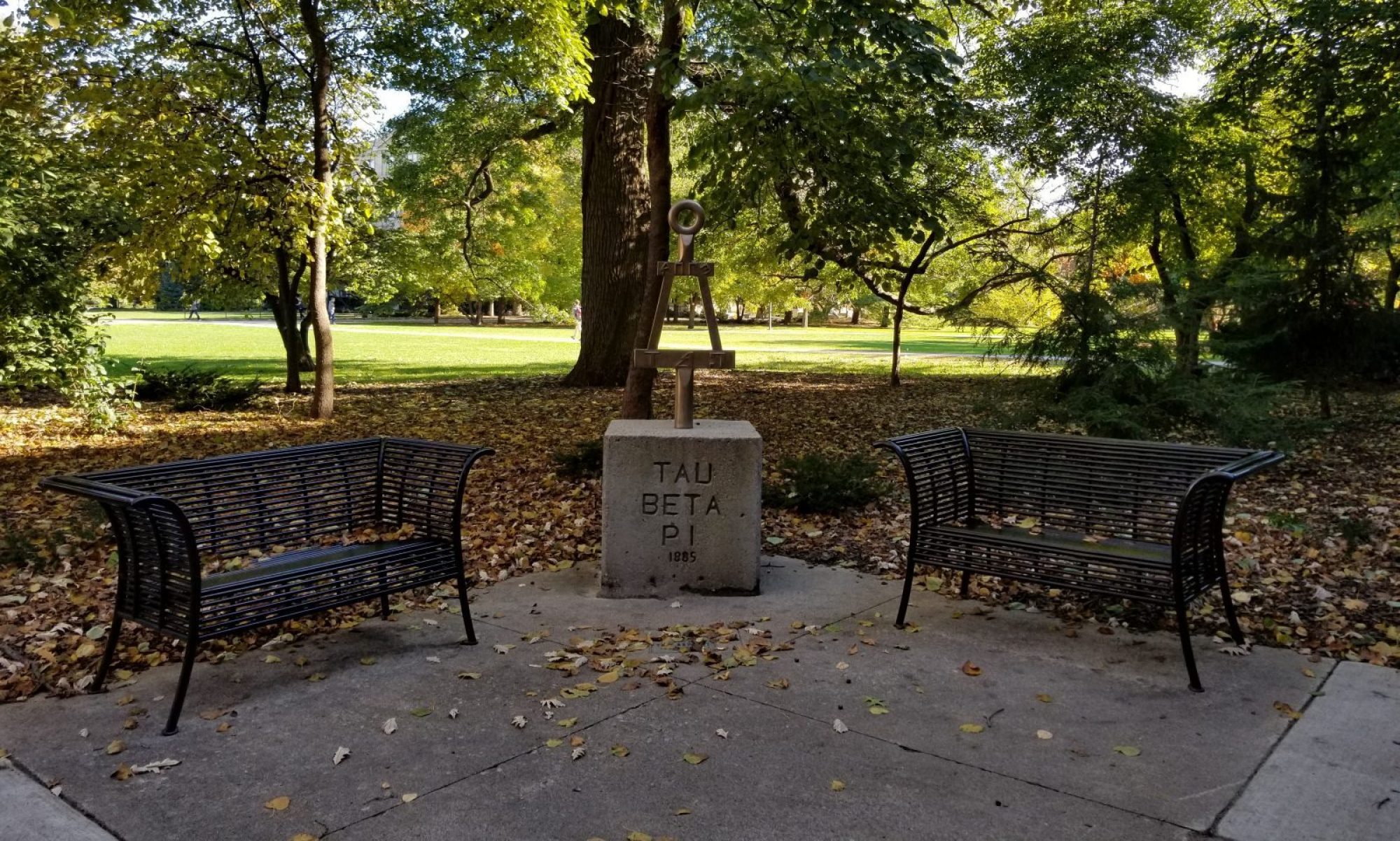 The Brunnier Art Museum is located on the 3rd Floor of the Scheman Building of the Iowa State Center. The Iowa State Center resulted from the vision of Iowa State University President James H. Hilton to expand outreach education, the cultural arts and athletics in a state-of-the-art complex of four structures: Hilton Coliseum for athletics; C.Y. Stephens Auditorium for performing arts; Fisher Theater for drama, dance and ISU theater productions; and the Scheman Building for continuing education. Henry became a member of the Iowa State University Foundation Board of Governors in 1959, which was formed with the goal of creating the Iowa State Center. After a successful meeting and tour with Dr. James H. Hilton, the Brunnier’s agreed to give their extensive art collection to Iowa State University. Along with gifting their art objects, Henry also made a considerable donation of IBM and National Lead stocks for the development of the Iowa State Center buildings, specifically for the construction of the Scheman Building and the exhibition space for the art collection. This gift led to Henry’s active involvement in the design and construction of the Iowa State Center and the proposed exhibition of the Brunnier Collection. When the collection of dolls and decorative arts amassed over fifty-five years arrived in 1974 it filled two semi-trailers with more than 4,000 objects. Neither Henry nor Ann lived to see the opening of the building in September 1975, but the Brunnier Art Museum continues to celebrate their generous legacy and fulfill their mission to enhance the student educational experience at Iowa State University.
The Brunnier Art Museum is located on the 3rd Floor of the Scheman Building of the Iowa State Center. The Iowa State Center resulted from the vision of Iowa State University President James H. Hilton to expand outreach education, the cultural arts and athletics in a state-of-the-art complex of four structures: Hilton Coliseum for athletics; C.Y. Stephens Auditorium for performing arts; Fisher Theater for drama, dance and ISU theater productions; and the Scheman Building for continuing education. Henry became a member of the Iowa State University Foundation Board of Governors in 1959, which was formed with the goal of creating the Iowa State Center. After a successful meeting and tour with Dr. James H. Hilton, the Brunnier’s agreed to give their extensive art collection to Iowa State University. Along with gifting their art objects, Henry also made a considerable donation of IBM and National Lead stocks for the development of the Iowa State Center buildings, specifically for the construction of the Scheman Building and the exhibition space for the art collection. This gift led to Henry’s active involvement in the design and construction of the Iowa State Center and the proposed exhibition of the Brunnier Collection. When the collection of dolls and decorative arts amassed over fifty-five years arrived in 1974 it filled two semi-trailers with more than 4,000 objects. Neither Henry nor Ann lived to see the opening of the building in September 1975, but the Brunnier Art Museum continues to celebrate their generous legacy and fulfill their mission to enhance the student educational experience at Iowa State University.
Henry Brunnier was born on a farm near Manning, Iowa on November 26, 1882. He was the first member of his hometown to go to Iowa State College where he graduated in 1904 with a Bachelor of Science degree in Civil Engineering. Henry met Ann Weideman when they were children in Manning and were married in 1905.
Following graduation, Henry was initially employed in Pittsburgh Pennsylvania, and subsequently for the New York Edison Company. He arrived in San Francisco, California, on May 4, 1906, two weeks after the 1906 massive earthquake and fire destroyed much of the city, on loan to help rebuild the streetcar system. Seeing the opportunity to provide consulting engineering services in reconstruction of the city, he opened his own practice on June 1, 1908, and remained in the city for the next 63 years. His engineering firm helped design many of the city’s most prominent buildings and landmarks, a large number in partnership with George Kleman, one of San Francisco’s foremost architects. He also served on the board of consulting engineers who supervised the design and construction of the San Francisco – Oakland Bay Bridge. In 1940 he was awarded a contract to design a submarine base in Panama and following the end of World War II was involved in reconstruction efforts in Europe.
Henry Brunnier was very civic minded and a member of several associations, which he found to be beneficial both personally and in his work. He was a member of the American Automobile Association (AAA), serving as president from 1945-1947. He was also a charter member of the Rotary Club in San Francisco beginning in 1908, which was the second Rotary Club in the United States, the first Rotary Club having been established in Chicago in 1905. He served as president of Rotary International from 1952-1953. Henry and Ann were able to travel the world through his membership and leadership in these associations. It was during these travels that Ann developed a passionate love for collecting, beginning with dolls and spreading into all areas of the decorative arts spanning from ancient Egypt and Rome to the 20th century and in all materials including dolls, delicate Roman and Venetian glass, Chinese ceramics from the Han through the Qing dynasties, and many exquisite examples of German porcelain and Bohemian glass.
(Henry Jay Brunnier was initiated into the Iowa Alpha Chapter of Tau Beta Pi, Class of 1904, by the California Alpha Chapter of Tau Beta Pi at the University of California, Berkeley, on March 13, 1913)
